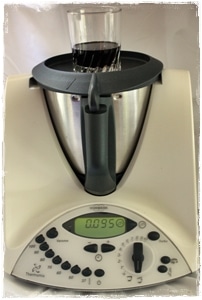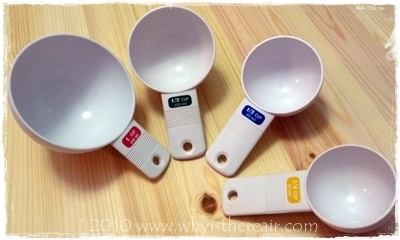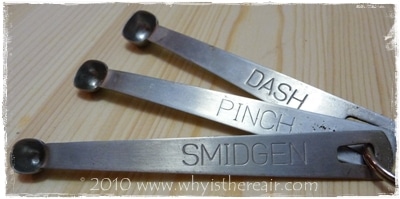Comforting Conversions

When, as I do, one comes from a different culture than that in which one lives, one’s homeland recipes can be inscribed in a different system of measurement than those of the adopted culture. Worse yet, they can be unsettlingly unfamiliar.
In other words, if you grew up with cups and Fahrenheit but you live in grams and Celsius, you need a good converter for your recipes!

After the chef of The Hove Kitchen asked me how to convert some American recipes (using the traditional American volume-based system) for the Thermomix whose built-in weighing scales measure in grams, a weight-based system, I did a quick Google search and came up with “About 301,000 results.” Being the kind soul that I am, Dear Reader, I shall save you the hassle of trawling through them and give you two amazing resources for converting cups to grams.
http://www.dianasdesserts.com/index.cfm/fuseaction/tools.measures/Measures.cfm
Diana’s Desserts is a Website Dedicated to Home Bakers and just for anyone who loves and enjoys the world of sweets and baking. Diana offers calculators for converting weight measurements, volume measurements, length, oven temperatures and even butter. In America, butter comes in “sticks” with tablespoon markings and recipes often call for “¼ stick of butter” which is impossible to approximate in another system without a converter of some kind. For my American readers – and I know you’re out there so please leave me a comment – the European measuring system is a weight-based system and everyone has scales of some kind as part of their kitchen clutter – I mean their kitchen paraphernalia.

But Diana doesn’t stop at converters on her website. No, she shows that she understands the very important premise of volume-to-weight conversions, which is density, and goes on to list conversion tables for the basic ingredients in baking such as flour, sugar of various kinds, cocoa, butter, cake flour (or self-raising flour), and even sliced vs. ground almonds. Why? Let’s take a look. A cup is a cup; it’s a fixed volume container but it’s what it contains that differs. Almonds are denser than sugar which in itself is denser than flour or icing (powdered) sugar, and so on.
http://www.receipe.org.uk/converting/convert_cups_to_grams_a.htm
This site called Holiday Recipes is a collection of “receipes from around the world. Receipe collections for all occasions making the most of seasonal produce. Many and varied recipes sorted by category and country.”
It offers over 5000 tried and tested recipes and in its extremely thorough style it even has an alphabetical list of cups-to-grams conversions for everything you can think of!
Ever hear of abiyuch? Me neither, but one cup of abiyuch weighs 114 grams. I’ll bet you’re impressed. One cup of canned (tinned) gooseberries weighs 245 grams but one cup of raw gooseberries weighs just 151 grams.
The author has understood the basic concept, and describes it thus: “When you convert from cups to grams, you are converting from a volume to a weight. Online calculation programs are simply not accurate enough in most cases and often these cups to grams calculators can be wildly out. Increasingly in the U.S. food is weighed in “grams” but many still live in a “teaspoons and measuring cup” age. Sometimes we just need an estimated amount for cooking in which case your cups to grams calculation is not a big deal but why risk it.
So if you don’t have standard measuring cups for all of your cupcake, cookie and other American comfort recipes, you can refer to the above links and sites to make your conversions.
Bon appétit !
